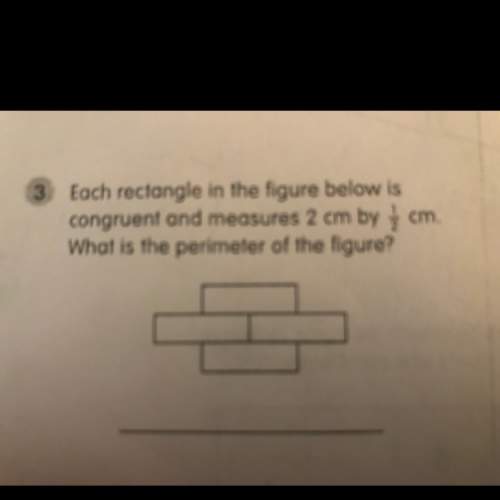
Mathematics, 24.04.2020 19:50 rosas8
Let D be a parallelogram with vertices (0, 0), (−1, 6), (−2, 0), (−1, −6) and D* = [0, 1] [0, 1]. (Note that D* = [0, 1] [0, 1] suggests the ordered list of vertices in D*, moving around the parallelogram in the counterclockwise direction : (0, 0), (0, 1), (1, 1), (1, 0). Likewise, move around in the counterclockwise direction in D when evaluating the transformation matrix A). Find a linear map T such that T(D*) = D.

Answers: 3
Another question on Mathematics

Mathematics, 21.06.2019 12:50
Asequence of numbers begins with 12 and progresses geometrically. each number is the previous number divided by 2. which value can be used as the common ratio in an explicit formula that represents the sequence? 1/2 2 6 12
Answers: 3

Mathematics, 21.06.2019 13:30
Which statement is not always true for a parallelogram? (a) opposite sides are congruent. (b) diagonals bisect each other. (c) it has 4 congruent angles. (d) consecutive angles are supplementary.
Answers: 1

Mathematics, 21.06.2019 14:40
The physical fitness of an athlete is often measured by how much oxygen the athlete takes in (which is recorded in milliliters per kilogram, ml/kg). the mean maximum oxygen uptake for elite athletes has been found to be 60 with a standard deviation of 7.2. assume that the distribution is approximately normal.
Answers: 3

Mathematics, 21.06.2019 19:10
In the triangles, bc =de and ac fe.if the mzc is greater than the mze, then ab isdfelth
Answers: 2
You know the right answer?
Let D be a parallelogram with vertices (0, 0), (−1, 6), (−2, 0), (−1, −6) and D* = [0, 1] [0, 1]. (N...
Questions

Mathematics, 20.08.2019 09:50


Social Studies, 20.08.2019 09:50

History, 20.08.2019 09:50


History, 20.08.2019 09:50


Mathematics, 20.08.2019 09:50





Mathematics, 20.08.2019 09:50


Geography, 20.08.2019 09:50


History, 20.08.2019 09:50

Mathematics, 20.08.2019 09:50


History, 20.08.2019 09:50




